The GPS sensors GPS18 LVC and GPS18x LVC in comparison
| Frameless version of this page |
In the year 2008 with the GPS18x LVC the successor model of the GPS18 LVC was placed on the market. After I had worked with the first GPS sensor for four years without any problems I was able to test and compare my new GPS sensor GPS18x LVC in March 2009 for the first time.
In the table below some of the differences are listed:
GPS Sensor GPS18 LVC GPS18x LVC ----------------------------------------------------- Cable length 3/5 m 5 m Current 60 mA 90 mA TxD signal 0/4.5 V +/-5.5 V Sensitivity -165 dBW -185 dBW
Both GPS sensors use the same case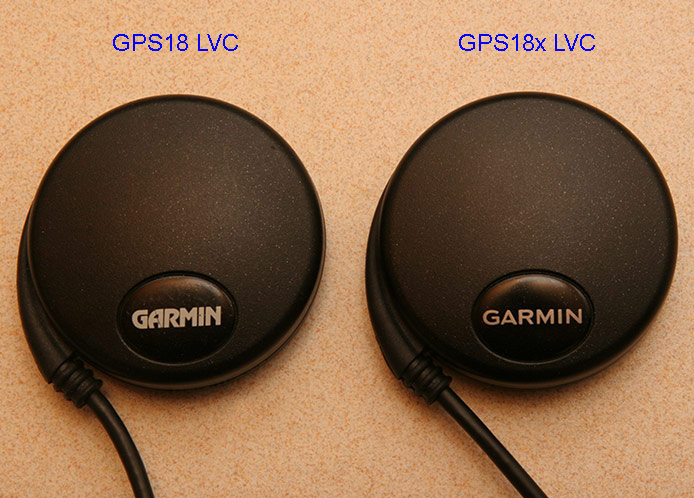 |
On the type designation on the underside one can see the difference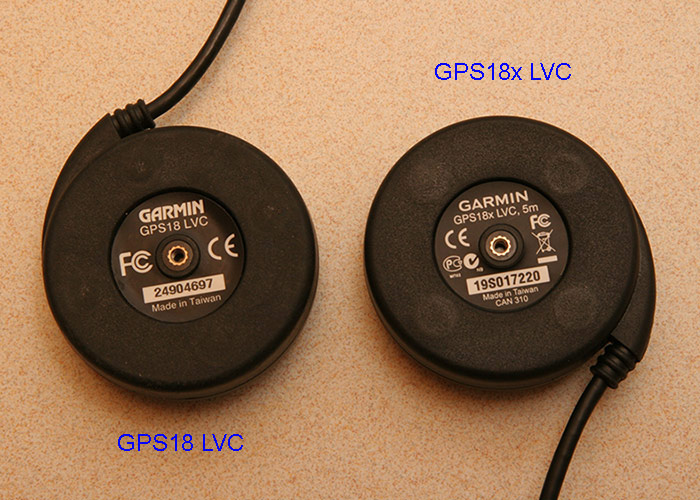 |
Link to a page with an inside view of a GPS Garmin18 LVC
| The configuration of both GPS sensors |
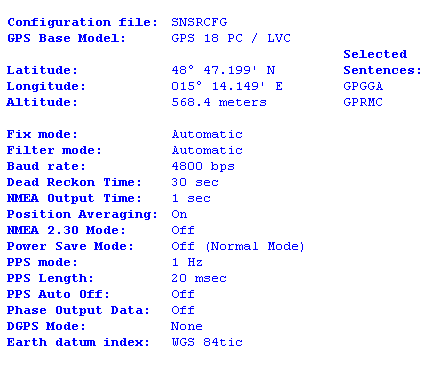 |
| TxD signal level |
The TxD signal level of the GPS18 LVC between GND and +4.5 Volts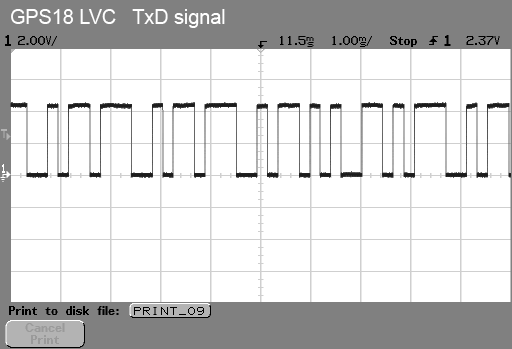 |
The TxD signal level of the GPS18x LVC with +/- 5.5 Volts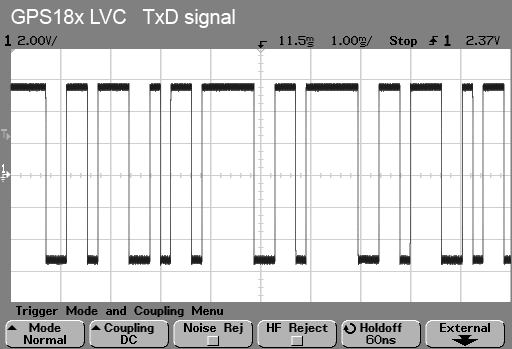 The new GPS18x LVC works with real RS232 level on TxD output. |
| The start puls of a UTC second - 1PPS |
The duration of both 1PPS signals was programed to 20ms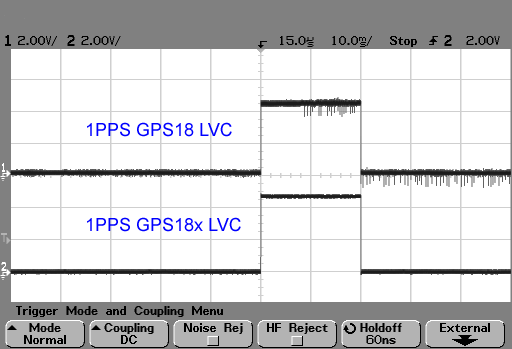 A new UTC second starts with the rising edge of the 1 PPS signal. |
The maximum difference measured between the 1PPS rising edges was -130 Nano seconds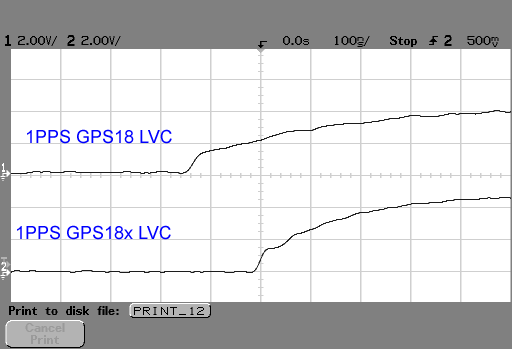 |
The extrem value on the other side was +30 Nano seconds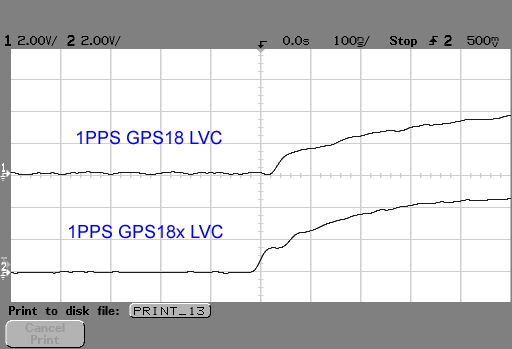 So if both GPS sensors had a position fix the rising edges of both 1PPS signals were always within a relative time span of 160ns. The absolute accuracy of the 1PPS signal is given within +/-1 micro second in the GPS data sheet. |
Both 1PPS signals in an overview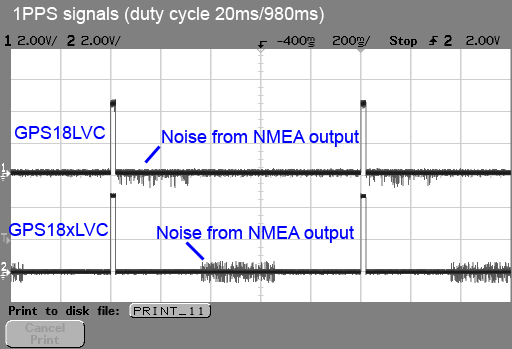 The noise level also shows when the NMEA data sentences are sended out. |
| NMEA data sentence output on TxD |
GPS18 LVC: 1PPS and TxD signal ($GPGGA+$GPRMC)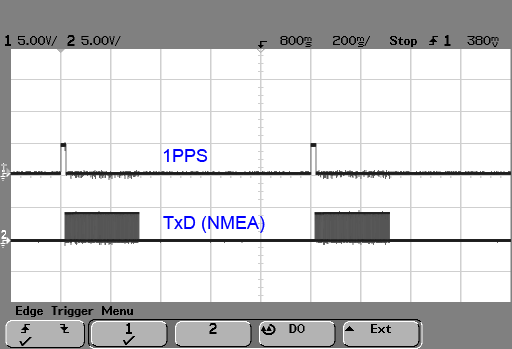 The older model GPS18 LVC starts NMEA data output during the 1PPS puls. |
GPS18x LVC: 1PPS and TxD signal ($GPGGA+$GPRMC)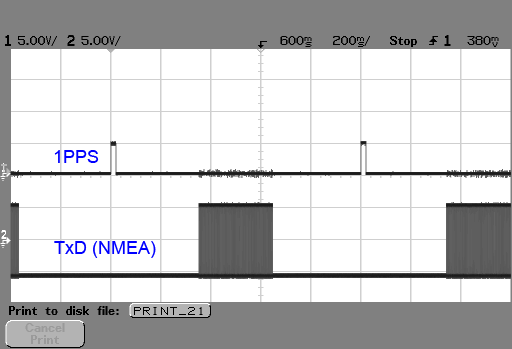 The newer model GPS18x LVC starts NMEA data output about 350ms after start of the UTC second. |
| The 1PPS puls after the lost of satellite receiving |
The 60 minutes free running 1PPS signal from GPS Sensor 18 LVC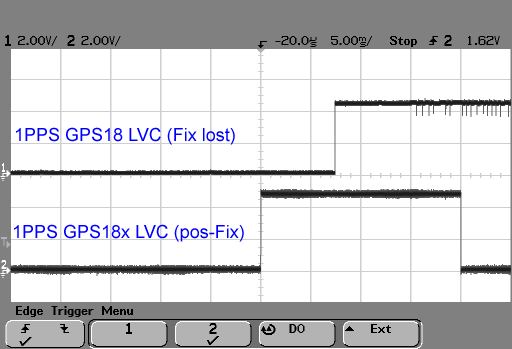 60 minutes after the last position fix a time error of 7.5 milliseconds is visible. This is equal to a frequency difference of about 2.1 ppm. |
The 60 minutes free running 1PPS signal from GPS Sensor 18x LVC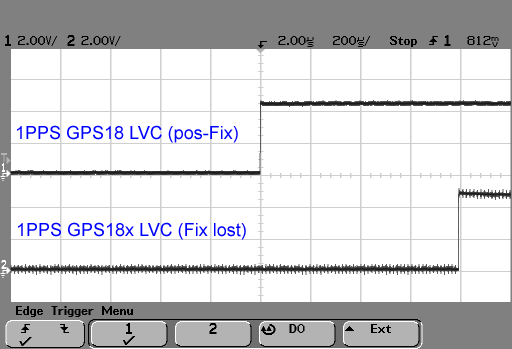 60 minutes after the last position fix a time error of only 0.8 milliseconds is visible here. This is equal to a frequency difference of only 0.2 ppm. But because also some jumping changes were visble here some further measurements are necessary for clarification. |
| The effect of a glitch on the 1PPS wire |
A glitch on the 1 PPS wire about 148ms befor the real UTC puls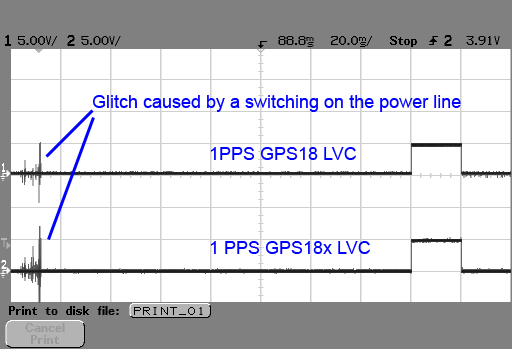 Immediately the KIWI-OSD detects the error in time since the last 1PPS puls (<1000ms) and shows this with flashing "XXXXXXXX" on the place of the "HH:MM:SS" display. |
The sensitivity in comparison
A comparison test showed a big surprise. Reading the data sheet I knew the new GPS18x LVC is about 20 dBW more sensitive. In practical tests the effect of this difference is extreme, mainly in bad receiving conditions.
For the comparison test both GPS receiver were put in operation behind a south direction window with three glass panels. From test made with the GPS18 LVC earlier I knew that it could last up to 30 minutes or more until the GPS has receiving from enough GPS satellites to get a 3D position fix.
Both GPS sensors direct inside the three panel window in south direction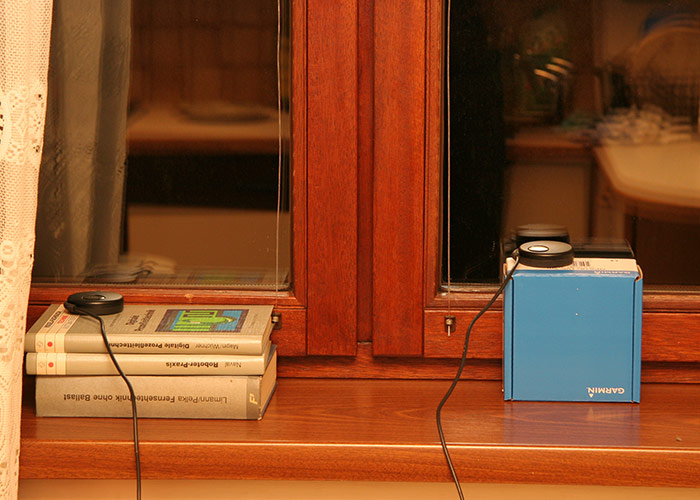 |
Some results
The new GPS18x LVC had a 3D-position fix after about 30 seconds. This time the older model GPS18 LVC needed about 40 minutes to get the first 3D-position fix. Also several position changes of the GPS sensors and new starts ended in the same results. The new GPS18x LVC can find enough satellites signals to get a 3D-position fix very fast also in bad receiving conditions.
The NMEA data of both GPS sensors are showing clearly the difference:
GPS18 LVC $GPGGA,205237,4847.2122,N,01514.1420,E,1,04,3.7,,M,44.4,M,,*63 $GPRMC,205238,A,4847.2122,N,01514.1420,E,000.0,161.4,090309,002.5,E*74 GPS18x LVC $GPGGA,205242,4847.2115,N,01514.1376,E,1,10,0.9,525.9,M,44.5,M,,*4D $GPRMC,205243,A,4847.2115,N,01514.1376,E,000.0,000.0,090309,002.5,E*7A
This result shows that the new GPS sensor GPS18x LVC much faster reaches a position fix in bad receiving conditions than the older type. In some cases it is possible that the older GPS sensor can not find a 3D-position while the newer model needs only few seconds for this. But in normal or good receiving conditions the difference will be not noticeable. And in my outdoor measurements done until now I never had problems to get a 3D-position fix just in time with the GPS18 LVC.
The new GPS18x LVC obviously is using a different internal table for height conversion from WGS84 to MSL than the older model GPS18 LVC. During my measurements a difference of 0.1 meter in the correction value was visible in the NMEA data. If this difference is caused by other table values or due to an other grid spacing can not determined here at the moment.
Because the new GPS sensor GPS18x LVC kann receive much weaker satellite signals, sometimes also satellites near the horizon are utilized. This has the consequence that the first few minutes after switching ON the altitude value may deviate relatively much. And because the older model GPS18 LVC utilize only stronger signals from satellites in higher altitudes the first height value output after power ON is much more precise.
Note
But this first test was not a comparison about the accuracy of the position data of both GPS sensors.
Link to my page - Precision time measurement with GPS and PC
May 08, 2009 |
|
Site Home |